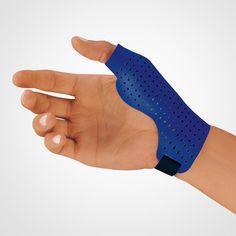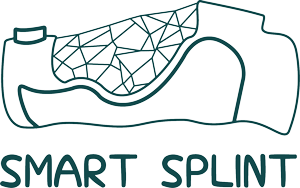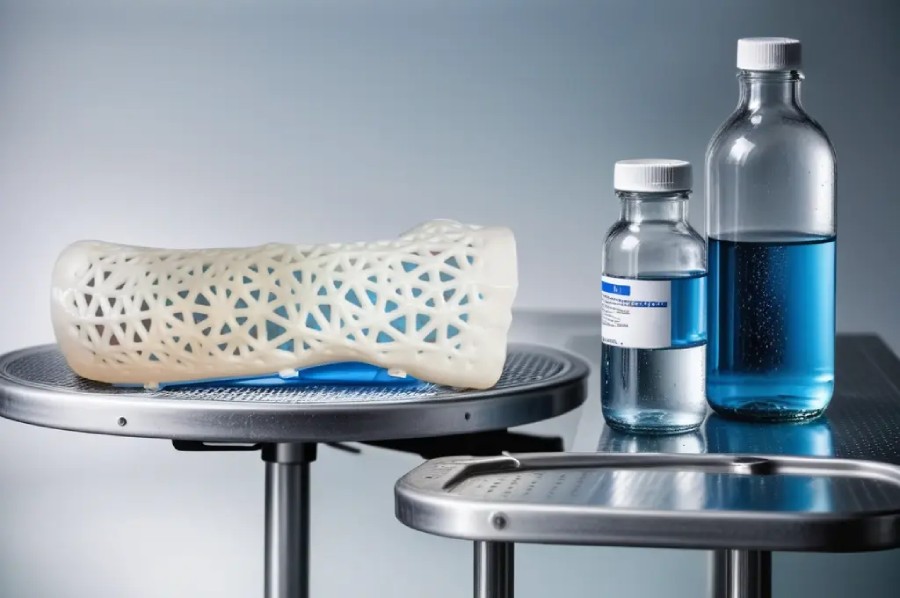
Advances in Splint Technology: Revolutionizing Healing and Comfort
Introduction
Splints have long been a crucial tool in the field of orthopedics, aiding in the immobilization and support of injured limbs. In recent years, significant advancements in splint design, materials, and technology have transformed the way we approach patient care and rehabilitation. This blog will explore the latest breakthroughs in splint technology, including lightweight and breathable materials, adjustable splints, and smart splints with integrated sensors for monitoring healing progress. These innovations not only enhance patient comfort but also contribute to more effective healing and improved outcomes.

1. Lightweight and Breathable Materials
Traditionally, splints were often bulky and uncomfortable, causing inconvenience and potential skin issues for patients. However, recent advancements in materials have led to the development of lightweight and breathable splints that address these concerns.
One notable material is thermoplastic, which can be molded when heated and retains its shape when cooled. Thermoplastic splints are lightweight, durable, and offer excellent breathability, allowing air circulation and reducing the risk of skin irritation. Additionally, they provide a precise fit, ensuring optimal immobilization and support while minimizing discomfort.
Another innovative material is fiberglass, which offers superior strength and rigidity compared to traditional plaster casts. Fiberglass splints are lightweight, and waterproof, and allow for easy X-ray imaging without the need for removal. These features significantly improve patient convenience and hygiene during the healing process.
2. Adjustable Splints
Customization plays a vital role in optimizing patient comfort and recovery. Adjustable splints have emerged as a game of anger in this regard, offering flexibility and adaptability throughout the healing journey.
One example is the use of Velcro straps and fasteners, allowing healthcare professionals to adjust the tightness and fit of the splint according to individual needs. This adjustability accommodates swelling, and changes in limb size, and provides a personalized fit that enhances patient comfort.
Furthermore, modular splints have gained popularity due to their versatility. These splints consist of multiple components that can be easily interchanged or adjusted to accommodate different stages of healing or changing patient requirements. For instance, a modular splint may include detachable sections that allow for gradual mobilization as the injury progresses, promoting rehabilitation while maintaining stability.
3. . Smart Splints with Integrated Sensors
The integration of sensors and technology into splints has opened up new possibilities for monitoring healing progress and optimizing treatment plans. Smart splints equipped with sensors provide real-time data on various parameters, enabling healthcare professionals to make informed decisions and track recovery more accurately.
These sensors can measure factors such as temperature, pressure distribution, range of motion, and muscle activity. By continuously monitoring these metrics, clinicians can assess the effectiveness of treatment, identify potential complications, and adjust therapy accordingly. For example, if a patient’s range of motion not improving as expected, it may indicate the need for additional interventions or modifications to the splint.
Moreover, smart splints often come with accompanying mobile application software platforms that allow patients to actively participate in their recovery process. These apps provide educational resources, exercise programs, and reminders for medication or follow-up appointments. Patients can also input subjective feedback, such as pain levels or discomfort, which helps healthcare providers gain a comprehensive understanding of the healing progress.
Smart splints with integrated sensors can offer several benefits in terms of monitoring and improving the healing process for patients. However, they may also face some challenges and problems. Here are a few potential issues associated with smart splints with integrated sensors:
- Sensor Accuracy: The accuracy of the sensors embedded in the smart splint is crucial for reliable data collection. If the sensors are not calibrated properly or if there are technical issues, it can lead to inaccurate measurements and unreliable feedback.
- Comfort and Fit: Smart splints need to be comfortable and properly fitted to ensure patient compliance and effective healing. The integration of sensors may add bulk or alter the shape of the splint, potentially causing discomfort or hindering mobility.
- Battery Life: Smart splints require a power source to operate the sensors and transmit data. Limited battery life can be a challenge, especially if the splint needs to be worn for an extended period. Frequent recharging or battery replacement may inconvenience patients and disrupt continuous monitoring.
- Data Interpretation: Collecting sensor data is one thing, but effectively interpreting and utilizing that data is another challenge. Healthcare professionals need to analyze the data to make informed decisions about the treatment plan. algorithms and software to process and interpret sensor data accurately can be complex.
- Cost: Smart splints with integrated sensors may be more expensive than traditional splints due to the additional technology involved. This cost factor could limit their accessibility and affordability for some patients or healthcare facilities.
- Maintenance and Durability: The integration of sensors adds complexity to the design of the splint, which may increase the risk of technical failures or damage. Ensuring the durability of the sensors and addressing maintenance requirements becomes essential to avoid frequent replacements or repairs.
- Privacy and Data Security: Smart splints collect and transmit sensitive health data, raising concerns about privacy and data security. Adequate measures must be in place to protect patient information and ensure compliance with relevant data protection regulations.
It’s worth noting that advancements in technology and ongoing research can help address these challenges over time, making smart splints with integrated sensors more effective and reliable for patient care.
Smart splint
Three-dimensional body splint with the ability to accelerate treatment and automatic washing and adjust the temperature of the broken area
What problem are we focusing on?
Due to the fact that there are many fractures and dislocations of body parts, and when this happens, the skin may be injured, burned, crushed by accident, or anything else, or require surgery in various processes. Also, the plaster currently used in this treatment not only is expensive but also the skin cannot be washed and treated. And the patient cannot wash the skin for 1 month because the plaster gets wet.
Our solution to tackle the problem
Smart Splint company produces a 3-D printer fully fitted for any patient. This innovative splint can regulate the temperature of the body intelligently which can be adjusted according to the doctor’s instructions. Drugs and treatment can be done without opening these splints. It is produced for all parts of the body. At times when the patient needs treatment and disinfection spraying, the drug automatically treats through a tube.
Benefits of this product
It is very light. It has the ability to adjust the temperature. Wounded or burned areas can be easily treated with disinfectants or creams.
The innovative point of this product
The system injects the drug into the fracture or burn area using an automatic control system. It has an automatic temperature regulation system with the help of a cooling or heating system. It is Washable. And we have access to the treatment area.
In conclusion, recent advancements in splint technology have revolutionized the field of orthopedics and rehabilitation. These developments have focused on enhancing patient comfort, improving healing outcomes, and providing healthcare professionals with valuable data for monitoring progress.
One significant advancement is the use of lightweight and breathable materials in splint design. Traditional splints were often bulky and uncomfortable, causing inconvenience and potential skin irritations for patients. However, the introduction of lightweight and breathable materials has addressed these issues, allowing for increased comfort and improved airflow to the injured area. This not only enhances patient compliance but also promotes faster healing by reducing the risk of complications.
Another notable development is the introduction of adjustable splints. These splints offer customizable support and immobilization, allowing healthcare professionals to tailor the treatment to each patient’s specific needs. Adjustable splints provide a more precise fit, ensuring optimal alignment and stability during the healing process. This adaptability also allows for gradual adjustments as the injury progresses, promoting a smoother transition from immobilization to functional recovery.
Furthermore, the integration of smart technology and sensors into splints has opened up new possibilities for monitoring healing progress. Smart splints can collect real-time data on factors such as range of motion, pressure distribution, and temperature changes. This information provides valuable insights into the healing process, enabling healthcare professionals to make informed decisions regarding treatment plans and adjustments. Additionally, smart splints can facilitate remote monitoring, allowing patients to receive personalized care and guidance from their healthcare providers without frequent in-person visits.
Overall, advances in splint technology have significantly improved patient experiences and treatment outcomes. The incorporation of lightweight and breathable materials, adjustable designs, and smart sensors has transformed the way injuries are managed and rehabilitated. As technology continues to advance, we can expect further innovations in splint technology that will continue to enhance patient care and optimize healing processes.


